Can you see where the first blue text is? Wouldn’t you like to be in that same position for all search queries relating to your business?
Of course, you would like to.
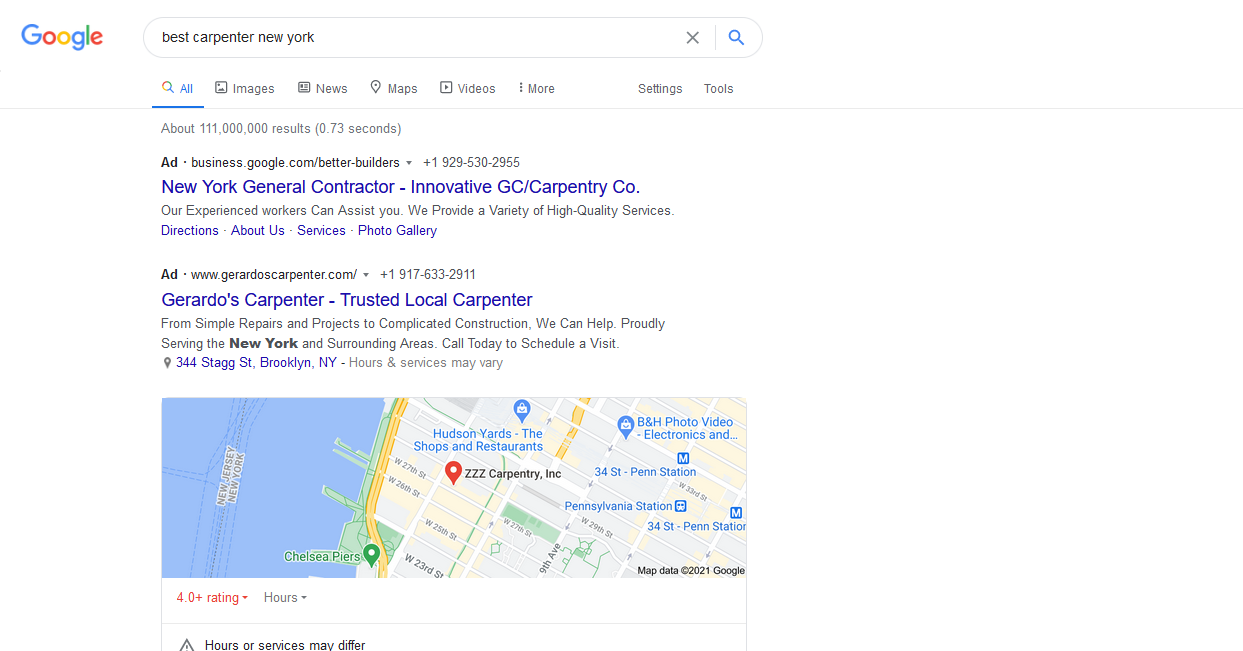
There is no better way than that to expose your business to online searchers. Once you’re on the top, it will be hard for people to miss you because they don’t need to scroll or click a button to see you. Once their search page loads, your business is the first thing that pops on their faces.
But how do you get there?
That’s what you’re here to learn.
Below is an infographic extract from one of Ahref’s research. It’s a chart summarizing the step-by-step guide to take your business to the top of Google.
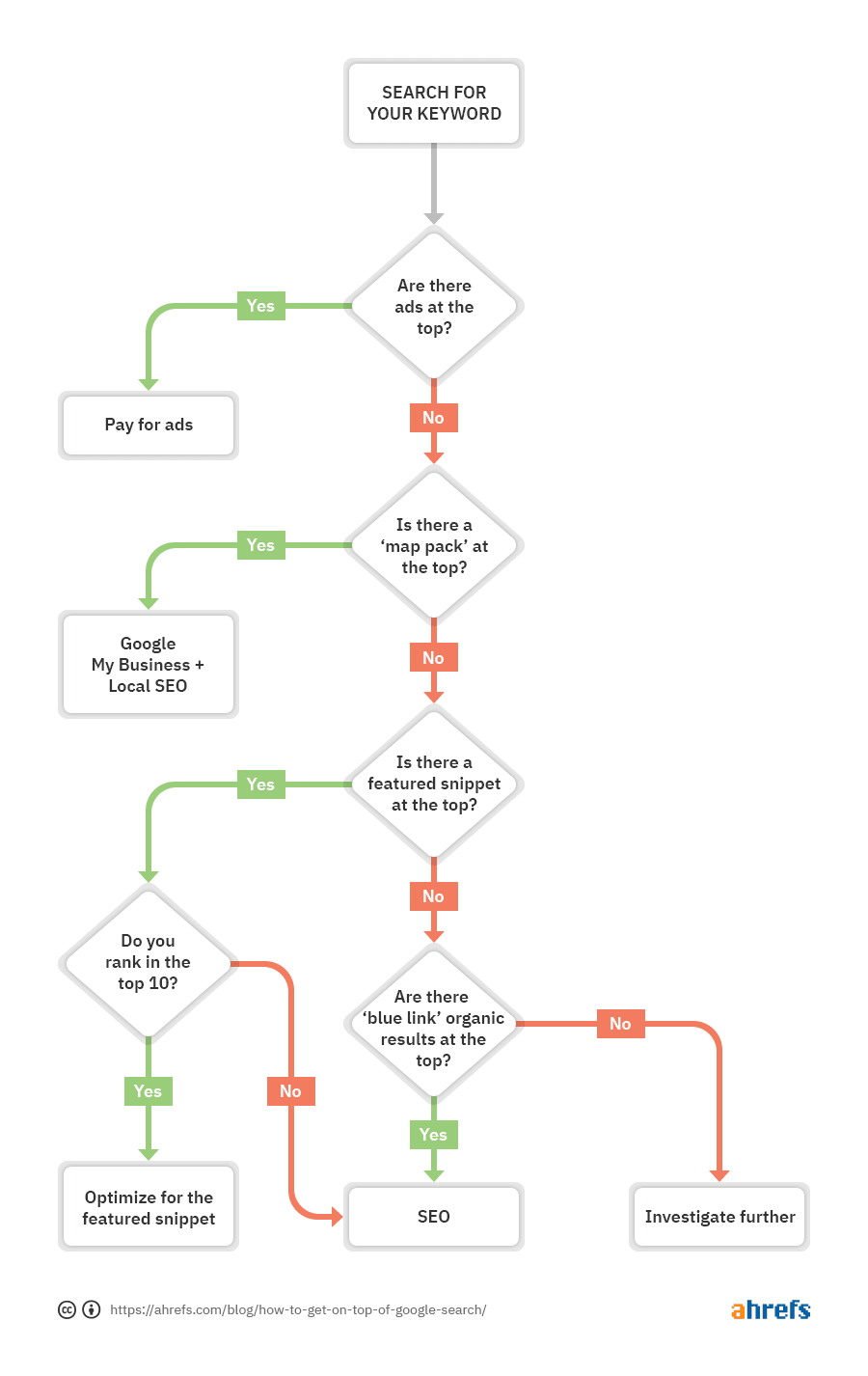
A Quick Summary of the Chart
As seen in the figure, the order of tactics for ranking on the top of Google is Ads – Map Pack – snippet – SEO.
In summary, what that chart is telling you is there is more than one method to get to the top of Google’s search results. In fact, there are four!
- You can get there via ads
- You can get there via Map Pack
- You can get there via a featured snippet
- You can get there via SEO
To know the method that will get you to the top of Google’s search results page fast, enter the keyword for which you’re trying to rank for into the Google search bar, and find out the type of things that are ranking on the top of its search page.
Whatever you find is your best bet to get to the top, too.
For example, if you search for a keyword you’re trying to rank for, and you find that ads are what you see at the top of the results for that target keyword, then the only way to appear right at the top of Google is to pay for ads.
Let’s take a look at this example:
When I searched for “best carpenter New York,” this is what appeared at the top:

It doesn’t matter how much effort somebody puts into their SEO; they can never get to the top of this kind of page because, as far as Google is concerned, ads own that space. If they want to get there, they got to pay for ads.
In other cases, it may be map packs you’ll see on top. Something like this:
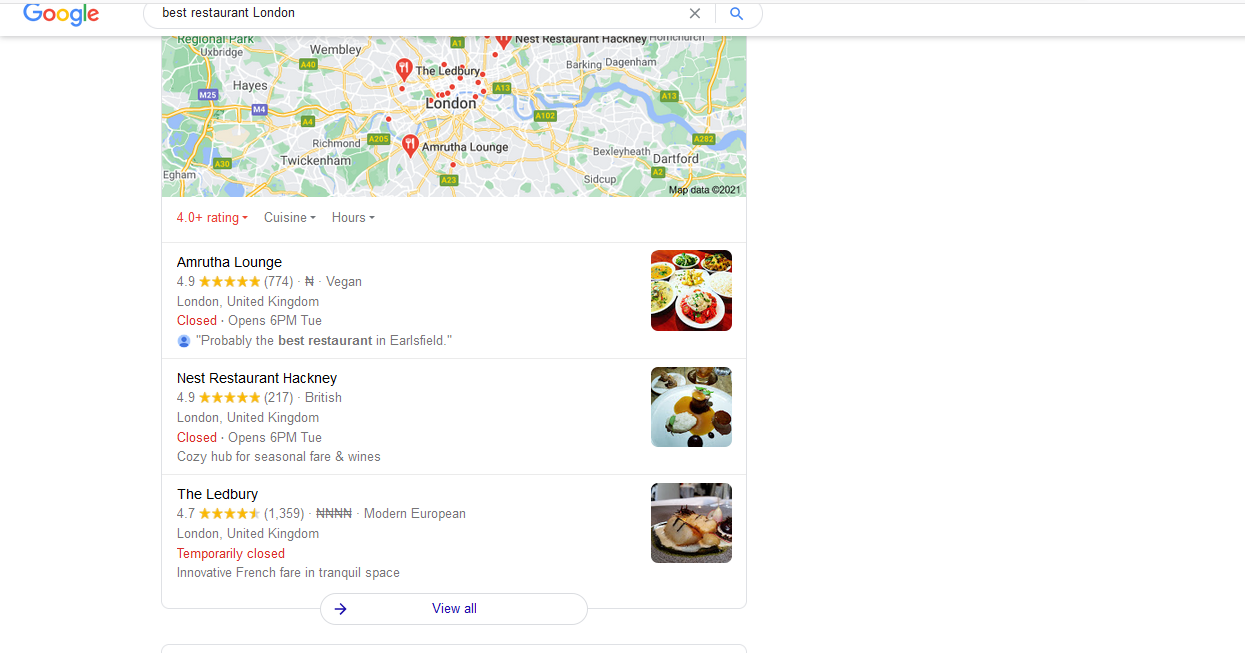
In this case also, it doesn’t matter how much effort you put into SEO or how much you spend on ads; you’ll never rank above map packs for this keyword page. If you’re hell-bent on getting to the top, then work on your Google My Business+ local SEO.
How to get to the top of Google with ads
As we’ve already established, if ads are what you see on the top of the search results page for a particular keyword you’re targeting, then the best way to get to the top is to pay for ads.
The question then is, how do you pay for ads?
It’s pretty simple, just sign up for Google ads and run an ad campaign.
The way Google ad campaigns work is that you bid on the keywords you want to show up for in Google. And then Google ranks you above or below other campaigners (your competitors), depending on how much you’ve chosen to pump into your campaign.
To set up a Google ad campaign, you’ll have to choose a keyword to bid on. My advice is that you perform a thorough keyword research to be sure you’re bidding on a keyword that has the potential to bring in traffic.
How do you know whether a keyword has the potential to bring traffic?
Search for it on Ahrefs or any other keyword research tool and check its search volume (number of people searching for it).
Side Note: If you don’t like or can’t afford the cost of Ahrefs? Here are some alternatives:
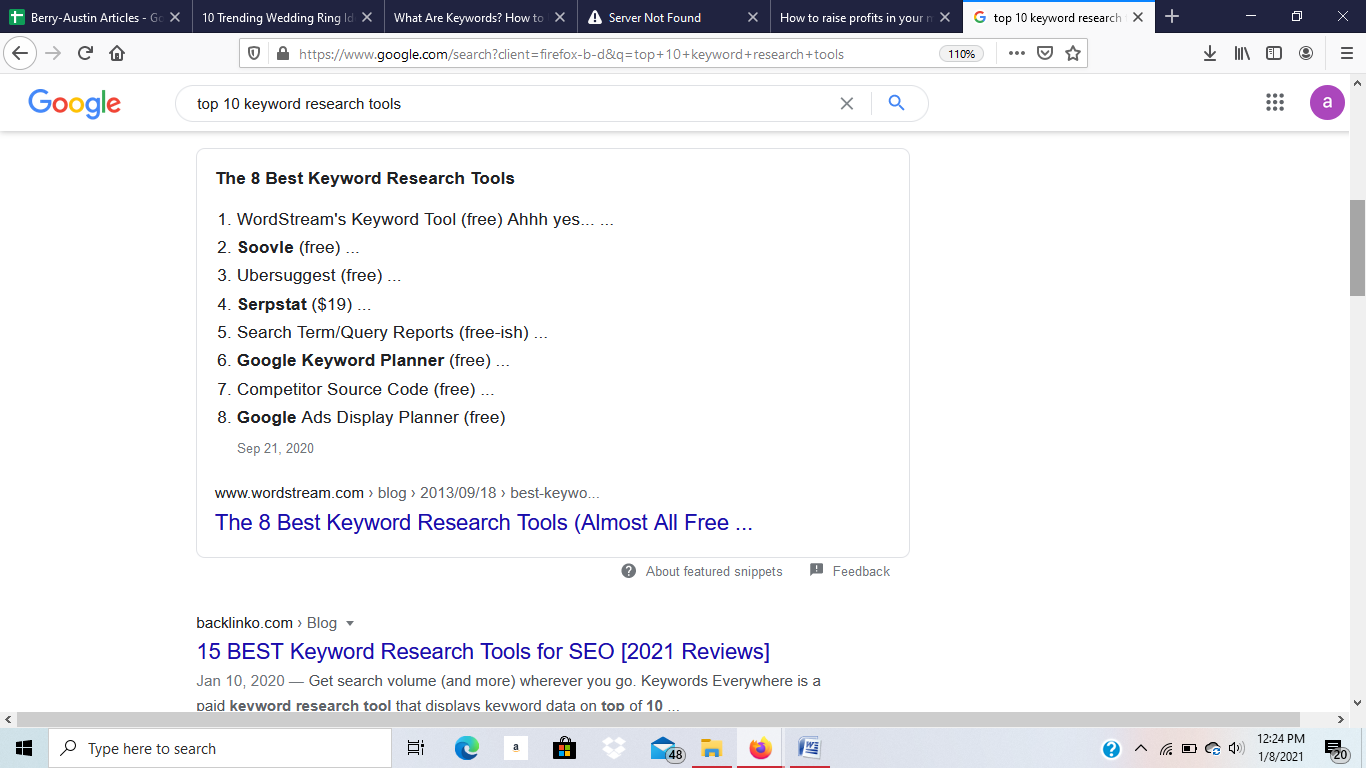
For example, if I search for Mortgage Payment Calculator on Ubersuggest, here is what I have:

With a search volume of 246k, this is a good keyword to spend on.
You should know that when running an ad campaign, you’ll also need to create a copy (the content searchers will see) and a landing page (the page searchers will land on when they click your ad). When creating both, ensure you create something better than that of your competitors.
This is because your copy and landing page contribute richly to your “Quality Score.”
A quality Score is Google’s own way of rating the effectiveness of an ad in solving searchers’ problems.
You can see the quality score for your campaign on your ad dashboard. This is what it looks like:

According to Google, “Higher Quality Scores typically lead to lower costs and better ad positions.” The better your copy and landing page, the higher your quality score.
From Google’s statement, if your copy and landing page are great, your quality score will benefit, and you’ll enjoy better ad positions at lower costs.
How to get to the top of Google with Map Pack
When you search for anything on Google, and you see a map of places, along with some business descriptions, what you’ve seen is called a Map Pack.
Something like this:
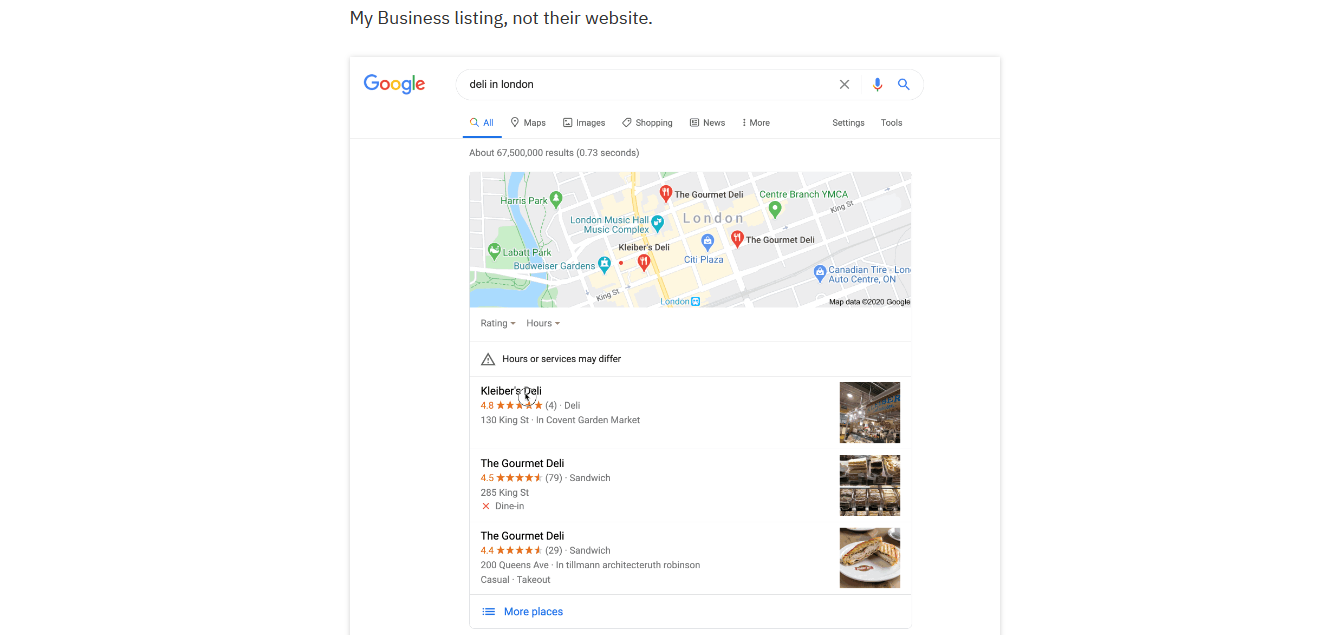
Usually, Google puts Map Packs on top of the search results page when the search queries are related to local businesses.
A good example is when somebody searches for XXX near me, YYY around me, or XXX in a particular location.
By leveraging the location where your business is situated, you can use this feature to get to the top of Google’s pages.
How?
- Step 1: Sign up for Google My Business: Google My Business is a feature created by Google, with the intention of gathering the best businesses in a particular locality in one spot for easy access for searchers.
Once your business’ Google My Business is up and running, Google will rank your business on top of any search results page featuring a local search relating to your business.
- Step 2: Optimize your Google My Business account: In some cases, simply signing up for Google My Business may not be enough to get your business on the top of Google’s search result pages. This usually happens when there is huge competition in that field of business. In this case, you may need to optimize your own account to show to Google that you’re indeed one of the best around. To optimize your listing, you can provide essential details such as opening times, address, phone number, website, and any other vital information you think may enhance your credibility.
- Step 3: Build high-quality citations: A citation is any reference to your company’s name on the web. To get these sorts of references, you can team up with other local businesses to get a mention on their sites, ask local influencers for shoutouts, or create local-intent guest posts on highly reputable sites.
- Step 4: Get more customer reviews: Always encourage customers to go online and leave a review of your business. The more online reviews you can get on your Google My Business Listing, the more credible you become in the eyes of Google. And the greater your chances of getting to the top of their pages.
How to get to the top of Google by featured snippet
If featured snippets are what you find at the top of the search results page for your target keyword, then your best bet for getting to that top spot is to win a featured snippet.
What is a featured snippet anyway?
A featured snippet is a selected search result (from the top 10 results of the first page) that is featured on top of Google’s organic results. Featured snippets aim at answering the user’s question right away.
Featured snippet
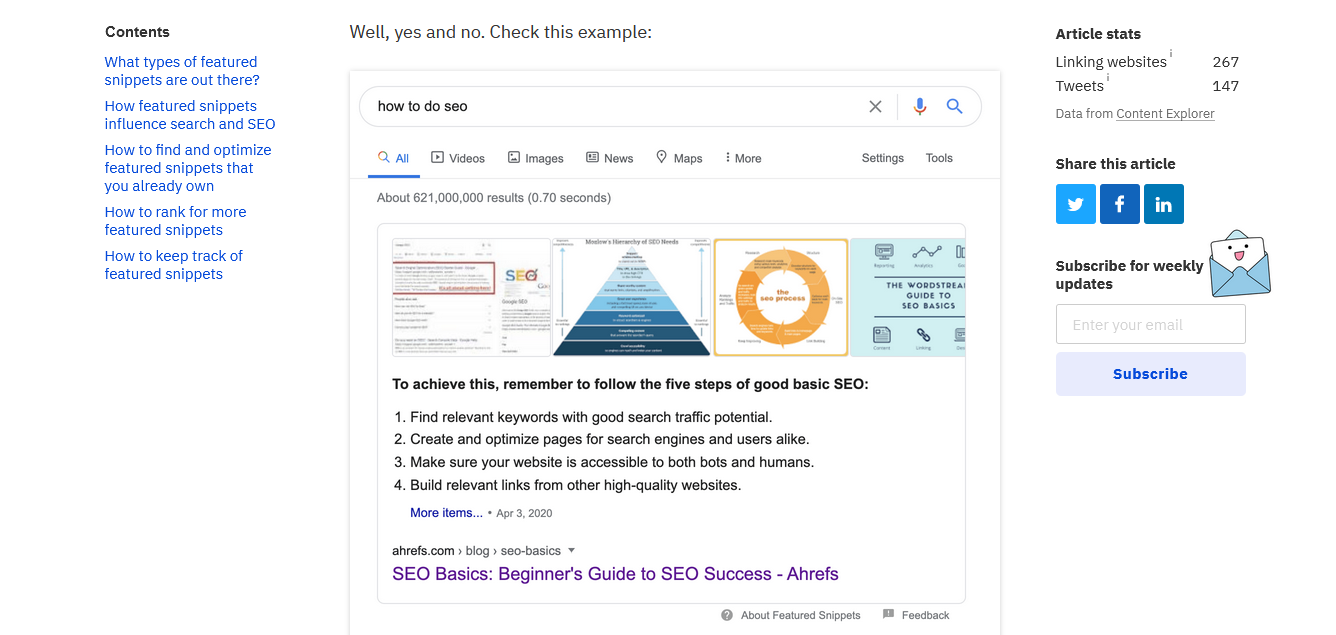
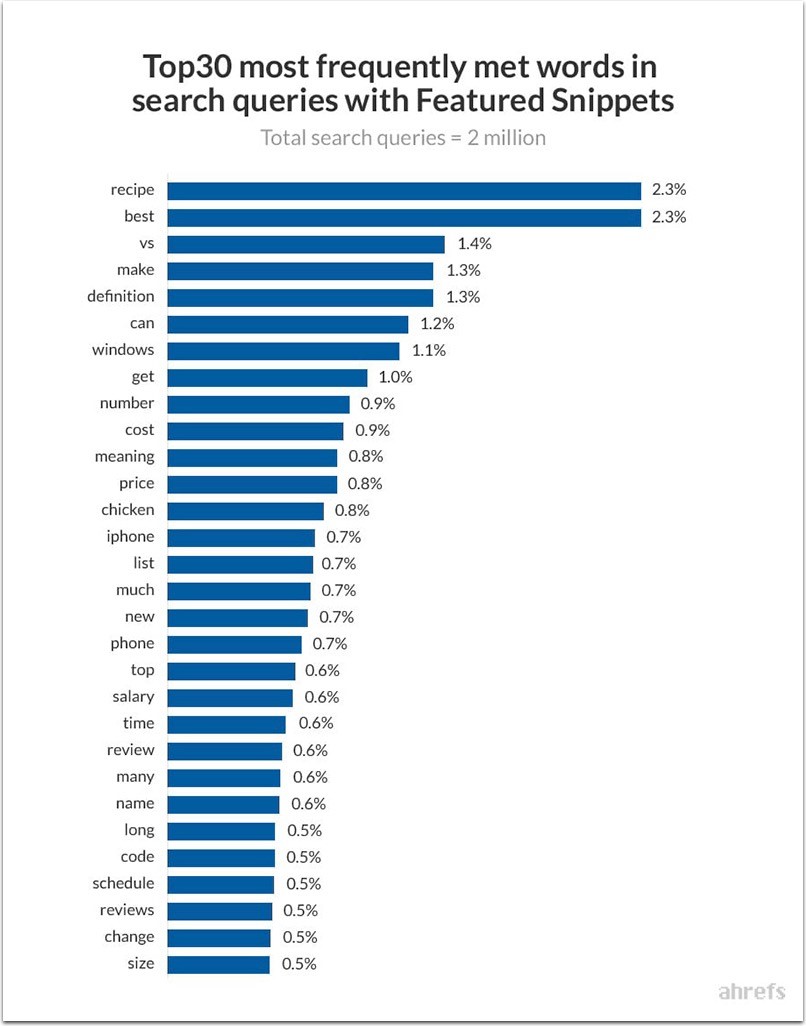
To leverage the featured snippet feature to rank on top of Google’s pages, there are basically two steps to follow:
- Rank your web page amongst the top 10 results on the first page
- Optimize that page for featured snippets
1.) The first step is pretty straightforward – getting into the top 10 of Google SERPs. But if you don’t know how to get into the top 10 results, you can check the latter part of this post. There is a discussion on how to use SEO to get to the top of Google SERPs. The same approach can be used to get into the top 10 results.
2.) To optimize a web page to win a featured snippet, simply provide the right kind of information Google wants to show in the snippet, and in the format Google wants it. For example, if we look at the featured snippet for the keyword “what is featured snippet,” we see that it’s a short paragraph definition.
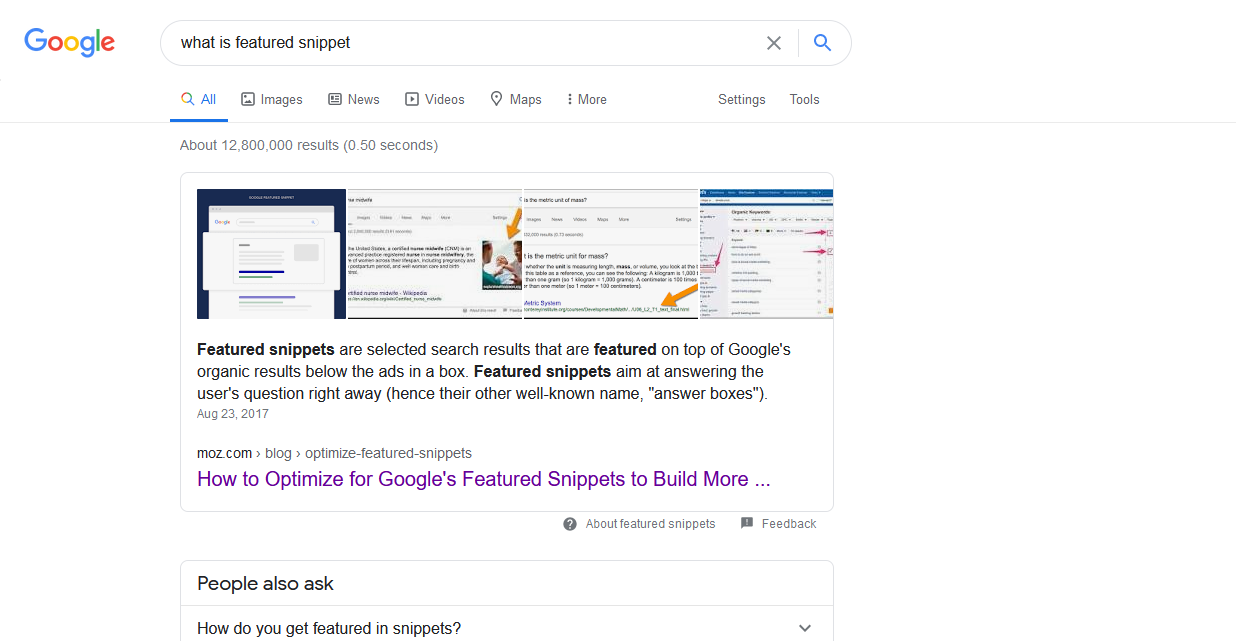
In other cases, it may be a video, numbered list, bulleted points, vs., pros and cons, benefits, quote, excerpt, etc.
Look at this example:
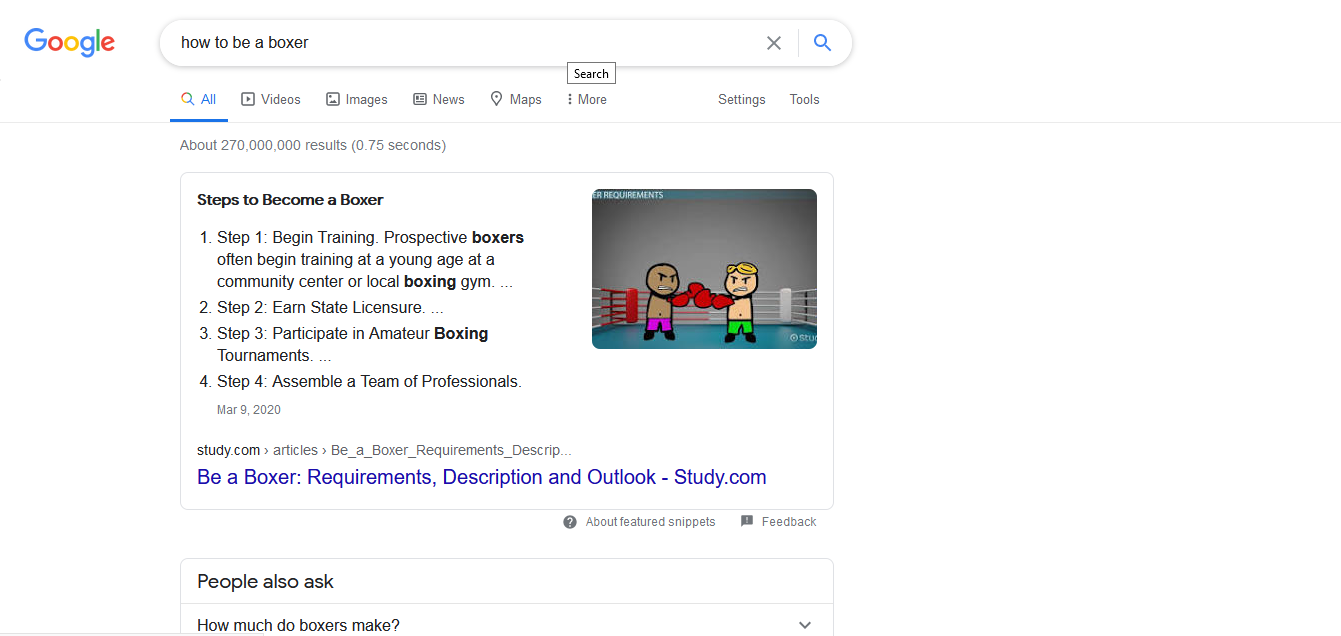
Here Google preferred a step-by-step numbered list.
To know all the sites that own the featured snippets for keywords you rank for on Google, simply Paste your domain into Ahrefs’ Site Explorer, go to the Organic keywords report, then filter for keywords with featured snippets in the results where you currently rank in positions 2–10.
Once you see the sites that own the featured snippets in these pages, you can see the type of content they’ve created and the format they’ve used to create the content. With this information, you can optimize your own page to be better or at least compete with theirs.
Or, you can even use this information to create content for your other keywords that anyone hasn’t yet won a featured snippet for.
How to get to the top of Google with SEO
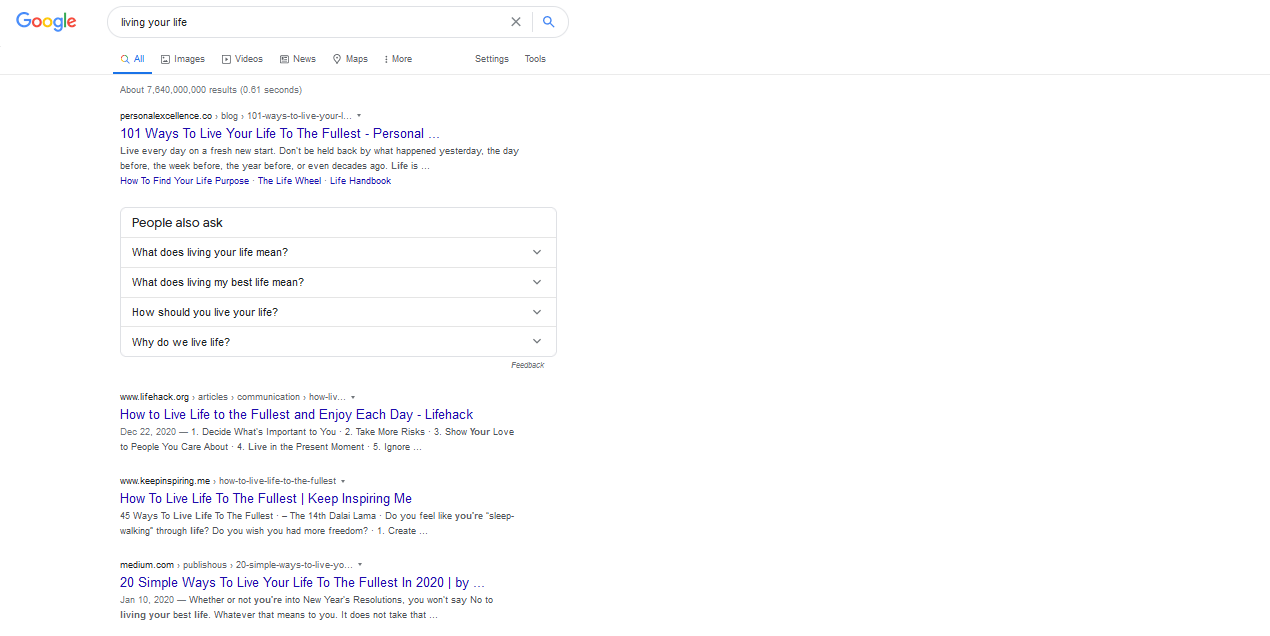
If regular “blue links” – like the ones in the figure above – are what you see at the top of Google for your target keyword, then your best bet for reaching top spot is to invest in SEO.
Normally, you can get started with SEO by hiring an expert SEO company like Rankwisely.com or Seoservicescanada.com, and having a site that’s:
- Mobile-friendly
- Fast loading
- Easy to use (clear navigation, good UX, etc.)
- Secure (i.e., HTTPS not HTTP)
- Well-structured
- Free of other technical SEO issues. Again, an SEO expert can help you fix any technical SEO issue you may have.
Alas, it is possible to invest in SEO (spend thousands of dollars) and observe the best practices and optimizations and still not make the top spot.
It’s very much possible.
If you find yourself in this position, run through this flowchart from Ahrefs. It contains a detailed description of what to do next.

A quick summary of the chart
Summarily, the whole point made in the chart above simplifies to:
- Check the competition
- Align your page with search intent
- Cover the topic in full
- Build high-quality backlinks
- Add internal links
1.) Check the competition: Once you identify your target keyword, enter it into Google, and see the site ranking on top of that page. If you find high authority websites or brands there, then the chances are pretty slim that you’ll ever be able to rank above them.
Unless, of course, you’re a big brand yourself.
Look at this example:

It doesn’t matter the amount of SEO effort you put up; it is next to impossible to beat Kohls to that number #1 spot. Even if anyone’s going to beat them, maybe Amazon. But definitely not you.
If you find that the top spot is occupied by the top dogs in your industry, it might be best to chase an alternative keyword that’s friendlier to up-and-coming sites like yours.
2.) Align your page with search intent
By search intent, we mean, what are the intentions of people searching for those keywords?
For example, if you search for “Money making tips,” you’ll notice that all of the top-ranking pages are unordered lists of tips.
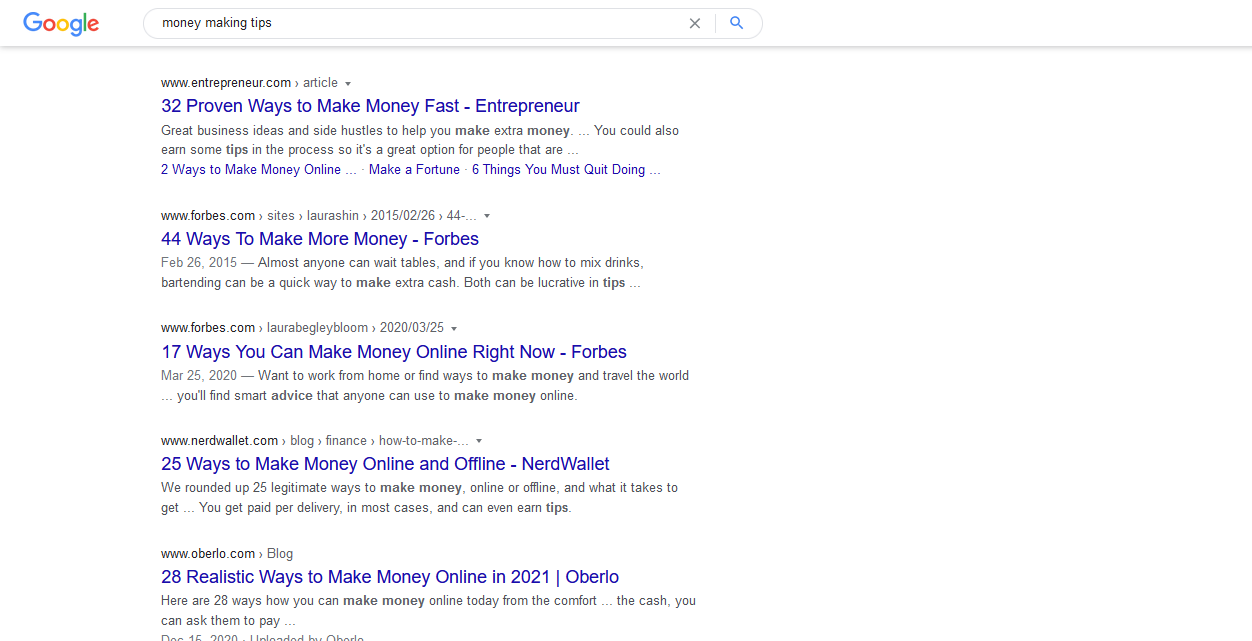
If you change your search to “how to be rich,” the results change to a how-to guide (step-by-step instructions).
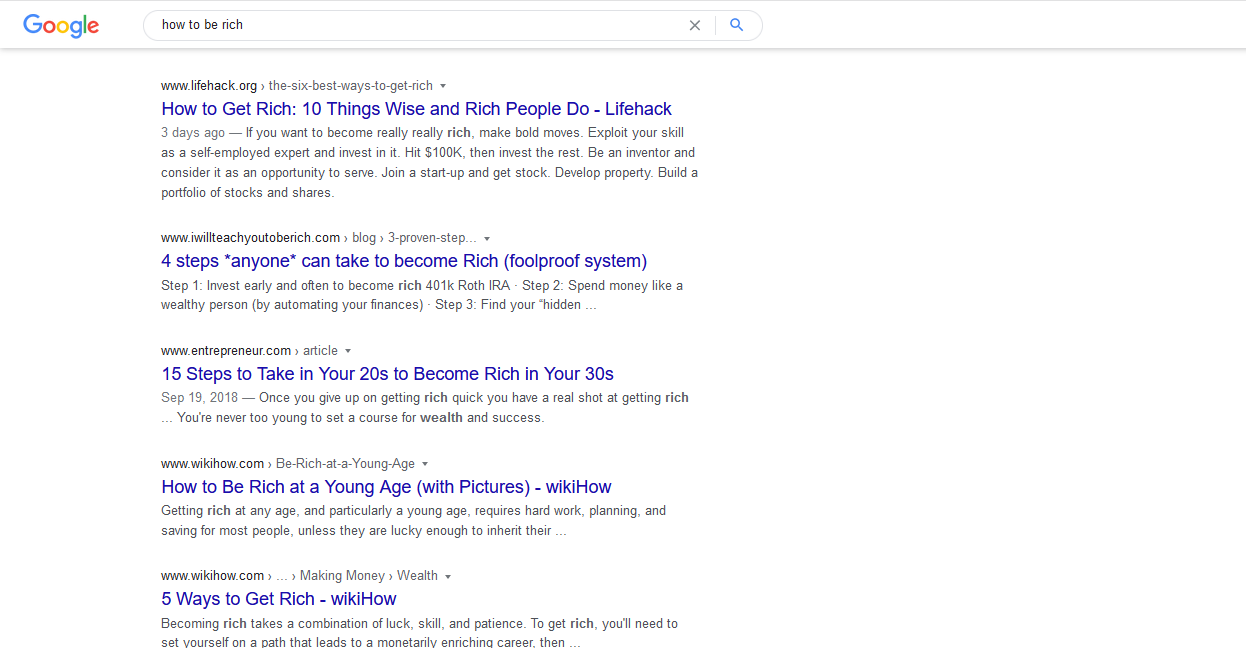
The point we’re trying to make here is that to stand the best chance of ranking at the top of Google; you should create the type of content that matches the intent of searchers.
But how can you know people’s intent? You wonder.
Not so hard, you can know searchers intent by following the three C’s of search intent:
- Content type: Are the top-ranking pages mostly blog posts, product pages, product category pages, or landing pages?
- Content format: Are the top-ranking pages mostly how-to guides, step-by-step tutorials, list posts, opinion pieces, reviews, comparisons, or something else?
- Content angle: Is there a dominant unique selling proposition used by the top-ranking pages? (e.g., for beginners, in 2020, etc.)
3.) Cover the topic in full
Google wants to rank pages that cover the things searchers want to know. But how do you know what questions and subtopics Google deems important for this keyword?
The best starting point is to eyeball top-ranking pages for commonalities. For example, the three top-ranking pages for “paleo diet” all talk about foods to eat. That tells us this is probably something most people searching for this keyword want to know about.
4.) Build high-quality backlinks
Google said in one of their statements that backlinks remain an important ranking factor. You can check that statement here. Various researchers have also found a correlation between backlinks and organic traffic.
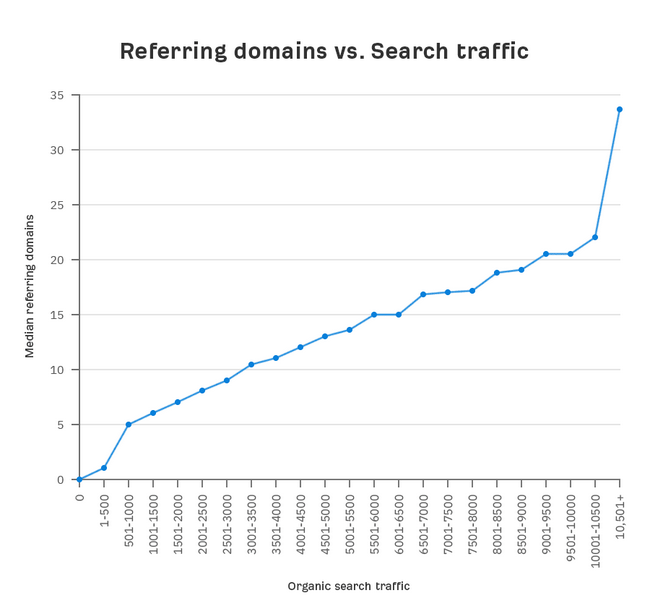
As seen from the figure above, the amount of organic traffic increased as the total number of referring domains increased.
To know how many backlinks you need to rank on top of Google, plug your keyword into Ahrefs’ free SERP checker and see how many domains link to the top-ranking page.
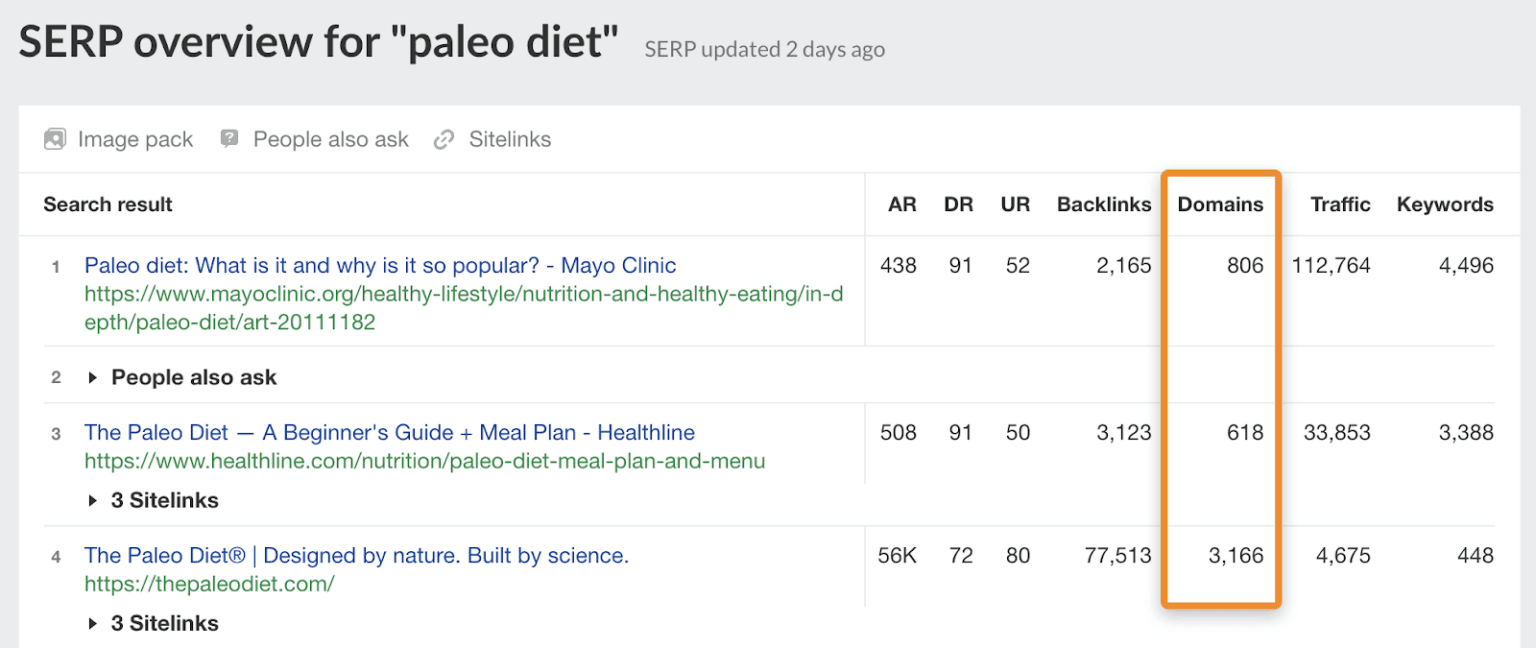
Just know that it’s not all about quantity. You might be able to outrank a page with lots of mediocre links with only a few high-quality links.
5.) Add internal links
Backlinks aren’t the only way to boost the ‘authority’ of a web page. Relevant internal links from other pages on your site also help. If you think you’ve built enough high-quality backlinks and still haven’t quite hit the number-one spot, it might be worth adding a few internal links.

